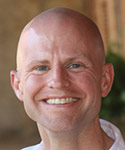A friend recommended I read Mason Currey’s “Daily Rituals: How Artists Work” as I was struggling to find a writing rhythm for my dissertation. Drawing on letters, diaries and biographies, the book documents the way that 161 “creatives” -- ranging from Kierkegaard to Jung to Mahler to Bergman -- described their own creative process.
It’s a revealing read. For example, who knew that Hemingway was fastidious about keeping a record of his daily word output to hold himself accountable to his craft? That Proust could only write in bed and would eat only two croissants and have two café au lait during a day? That Stravinsky used headstands to reinvigorate his creative energy during his three-hour-long composing sessions? Or that Jonathan Edwards would pin notes to his clothing so as to not forget insights gained during frequent walks in the country?
While the variety of creative methods the artists used provides some freedom for aspiring creatives, the book itself is a broader defensefor structure and discipline. Here’s what Currey writes in the introduction:
“one’s daily routine … can be a finely calibrated mechanism for taking advantage of a range of limited resources: time (the most limited resource of all) as well as willpower, self-discipline, optimism. A solid routine fosters a well-worn groove for one’s mental energies and helps stave off the tyranny of moods.”
Throughout the pages that follow, he chronicles the way that structure and discipline liberated these artists to do their best work, even the many who claimed neither structure nor discipline in their creative endeavors.
The lessons in the book are important for people beyond the creative class, particularly those who lead institutions. Much has been said and written about the unpredictability of the leader’s life, about the persistence of interruption, the disorientation that comes from crisis and the alarming effect of decision fatigue. But there is increasing attention to the importance of routine in the leader’s life, to the way that it releases mental energy, allows creativity and promotes resilience within leaders. Famously, Michael Lewis’ profile of Barack Obama in Vanity Fair highlighted the way that the chief executive depends on the beneficial aspects of routine so as to conserve his mental energy for the most critical decisions of his day.
As we move through Lent, with its focus on self-reflection and self-discipline, now may be an appropriate time to examine the routines of our lives and our leadership. Have we consciously developed structures that are salutary for us and beneficial for our organizations? Or have we fallen into patterns of work that are self-defeating or even injurious to our welfare or to the welfare of the organizations we serve? For most leaders, the answers to these questions will be yes. We will have intentionally developed patterns that promote thriving, but we also will have stumbled into patterns that do not.
Now is a good time to reassess and to decide how we want to live in the future. We may not do headstands with Stravinsky or adopt Hemingway’s compulsive charting, but what they found through those things, we may as well. As William James advises:
“The more of the details of our daily life we can hand over to the effortless custody of automatism, the more our higher powers of mind will be set free for their own proper work. There is no more miserable human being than one in whom nothing is habitual but indecision, and for whom the lighting of every cigar, the drinking of every cup, the time of rising and going to bed every day, and the beginning of every bit of work, are subjects of express volitional deliberation.”







